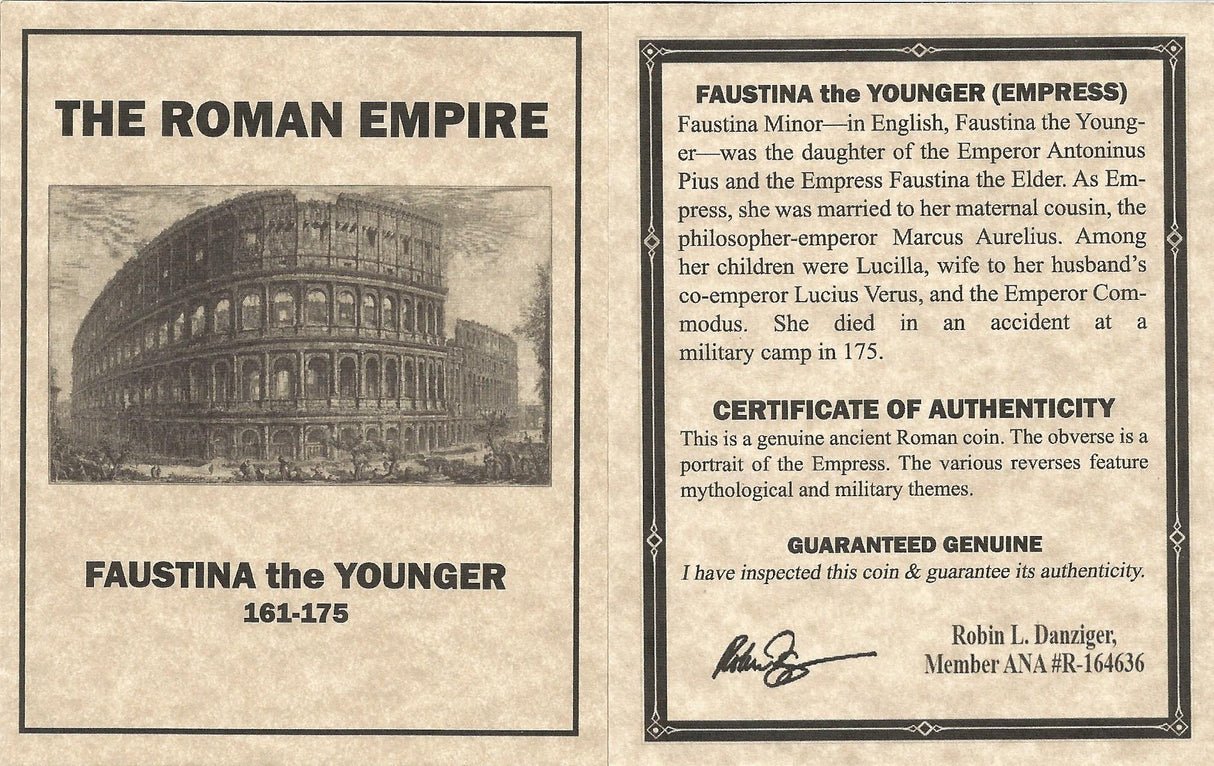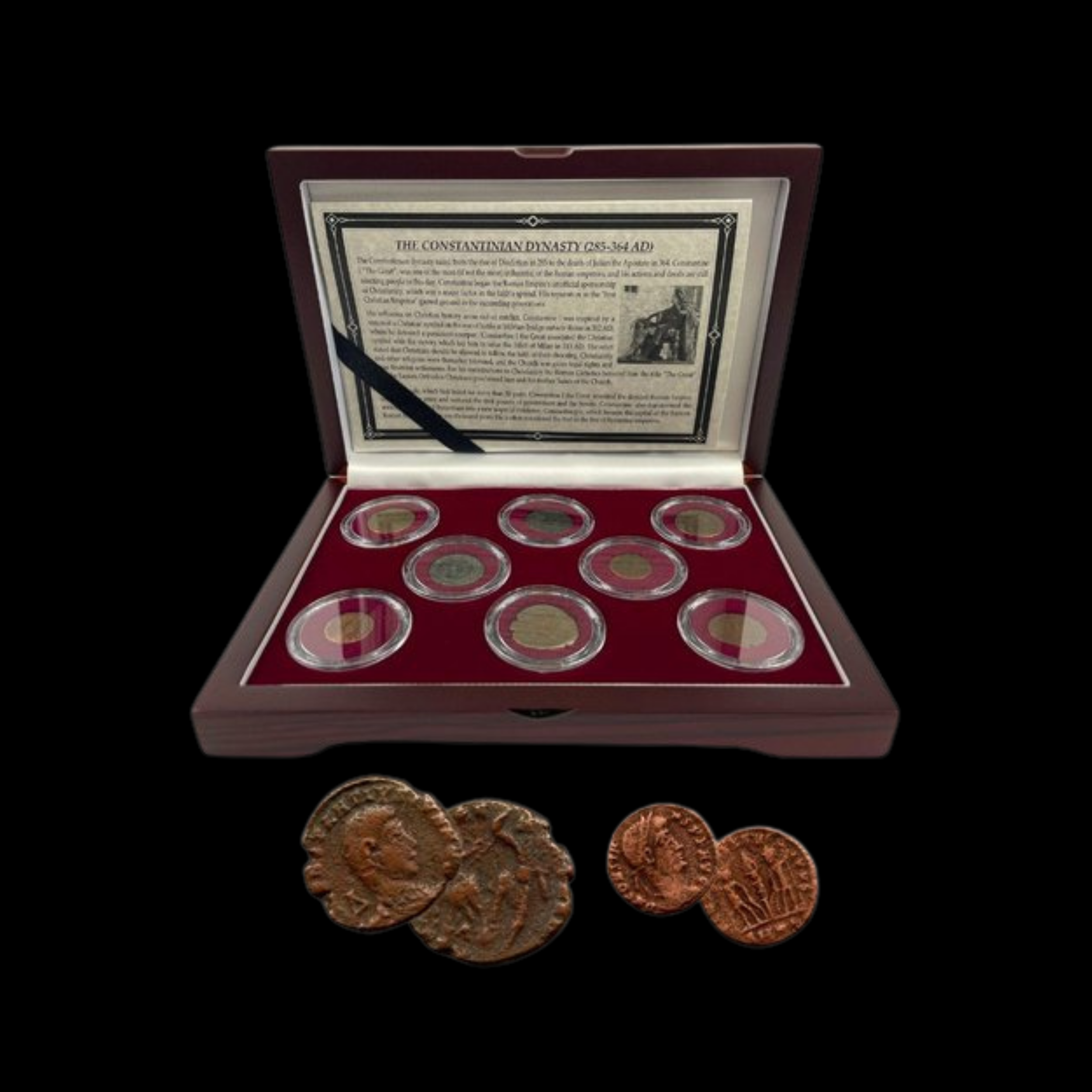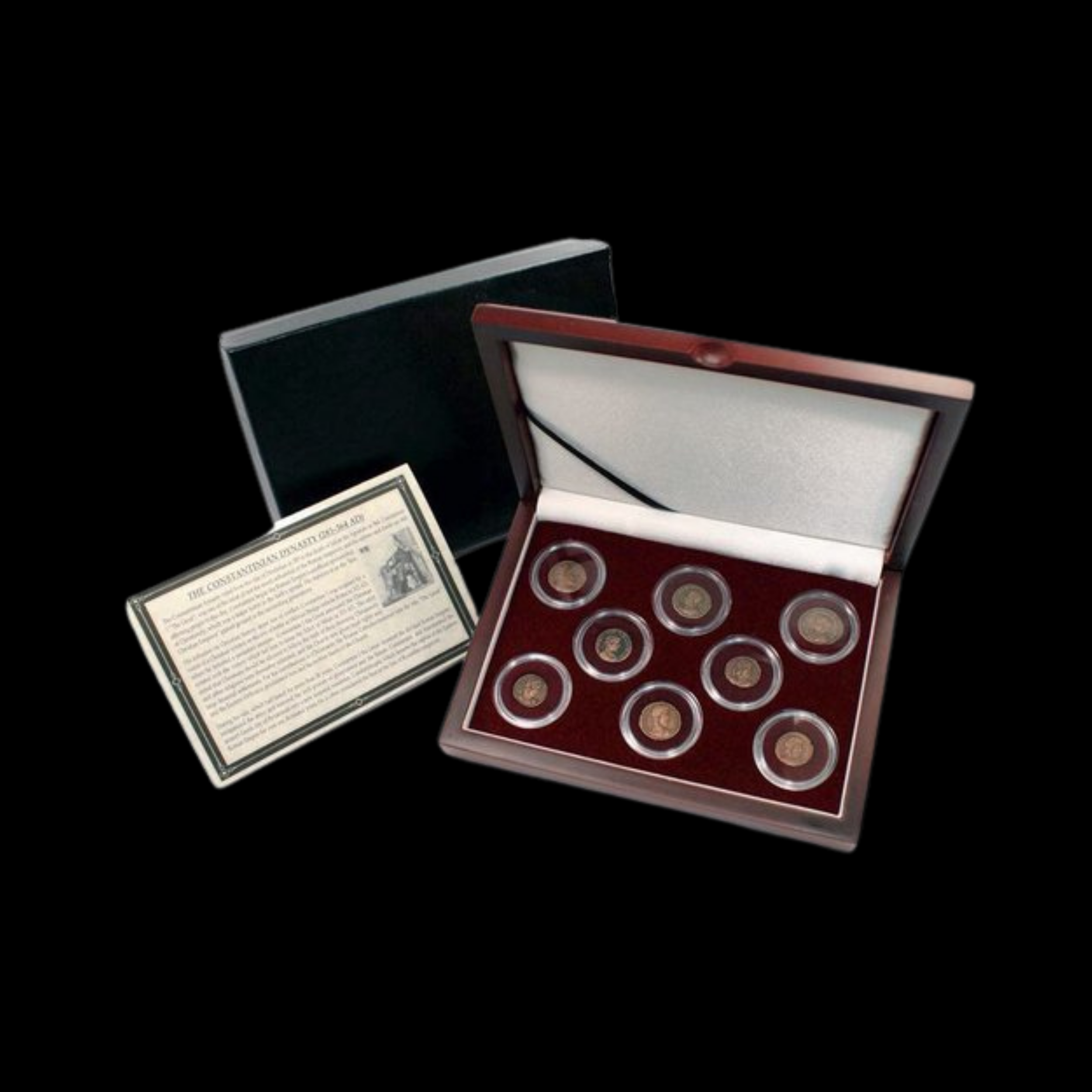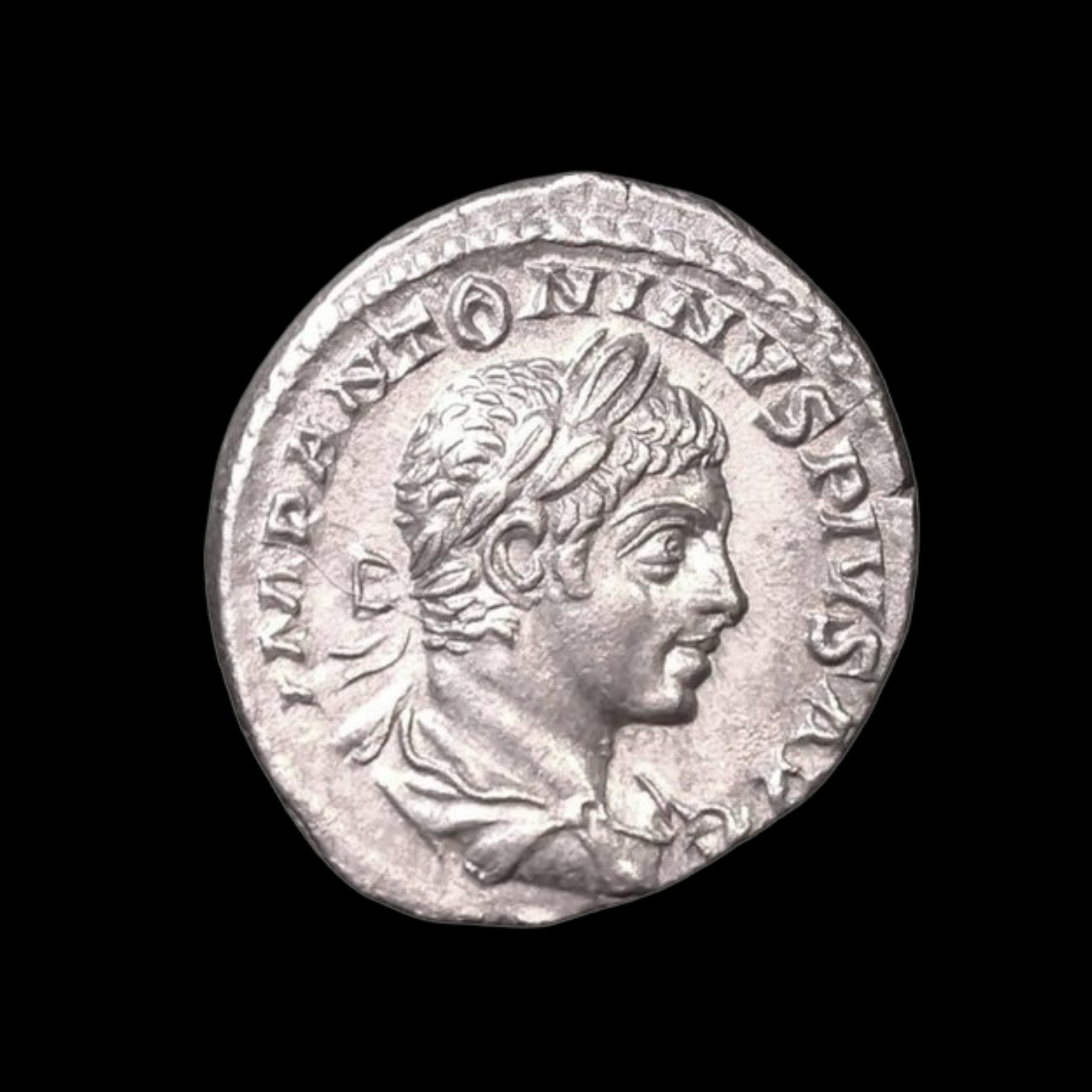 Image 1 of 2
Image 1 of 2

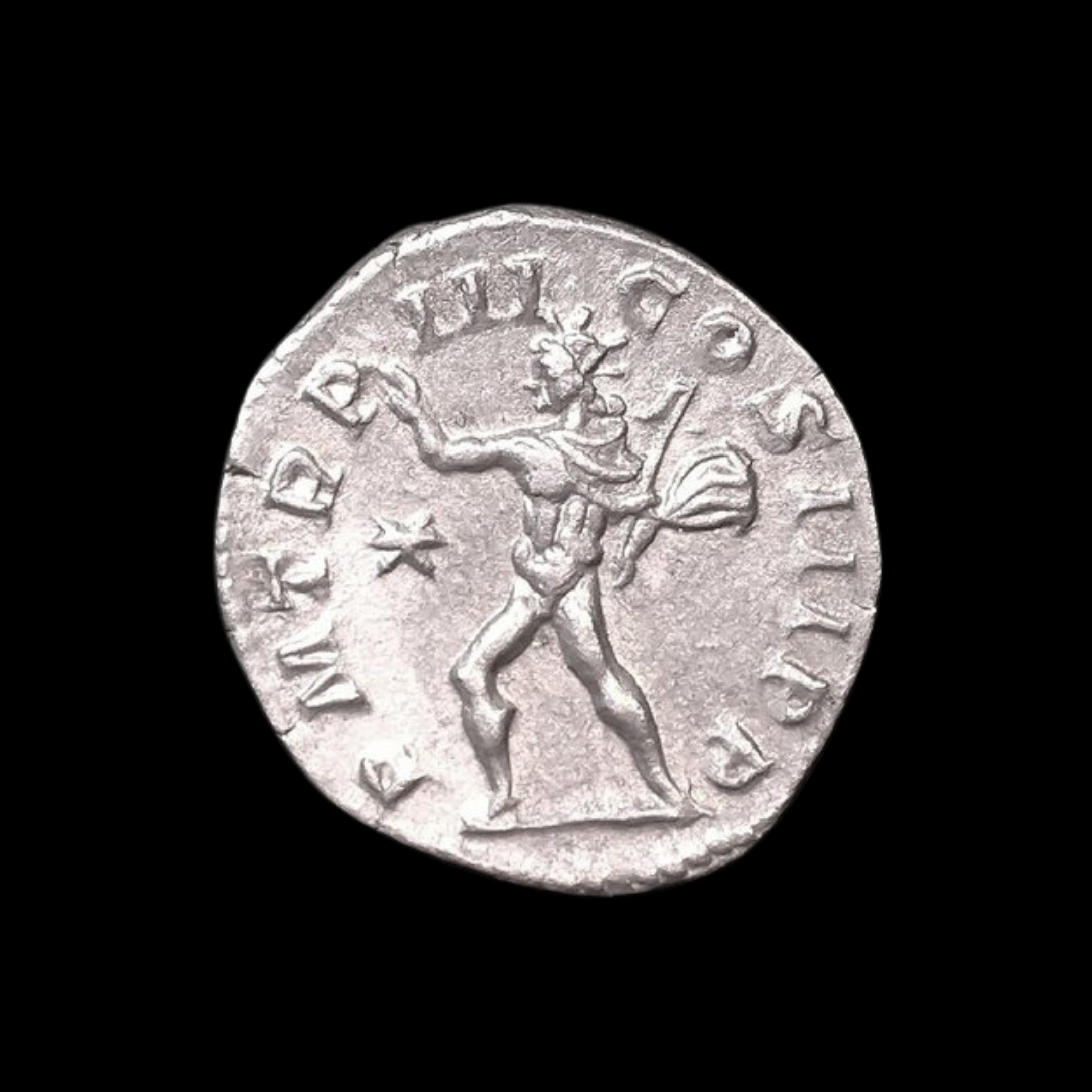 Image 2 of 2
Image 2 of 2



Roman Empire Silver Denarius of Elagabalus (about 1800 years ago)
This silver coin was minted in Rome during the brief but controversial reign of Emperor Elagabalus, a teenage ruler who scandalized Roman society with his religious practices and alleged eccentric behavior. The denarius remained the standard silver coin of the Roman Empire, though by this period it had been significantly debased from its original silver content.
Coin Description:
Front side: Laureate bust of Elagabalus facing right with the Latin inscription "IMP ANTONINVS PIVS AVG" (Emperor Antoninus Pius Augustus - his official imperial name)
Back side: Sol (sun god) standing left, naked except for a cloak over shoulder, raising right hand and holding whip, with a star in the field; inscription "P M TR P III COS III P P" (Pontifex Maximus, Tribunician Power 3 times, Consul 3 times, Father of the Country)
Technical Details:
Silver composition (likely debased with copper), weighing 3.48 grams
Denarius denomination (standard Roman silver coin)
Reference: RIC-28b
No certification mentioned
Date: 220 CE
Condition: Not specified
Historical Significance:
Elagabalus (also known as Heliogabalus) ruled Rome from 218-222 CE and was notorious for his devotion to the eastern sun god Elagabal. This coin prominently features Sol, reflecting the emperor's religious focus. The young ruler's short reign ended in assassination at age 18, orchestrated by his own family. This coin represents a period of mounting crisis in the Roman Empire that would eventually lead to the tumultuous "Crisis of the Third Century."
This silver coin was minted in Rome during the brief but controversial reign of Emperor Elagabalus, a teenage ruler who scandalized Roman society with his religious practices and alleged eccentric behavior. The denarius remained the standard silver coin of the Roman Empire, though by this period it had been significantly debased from its original silver content.
Coin Description:
Front side: Laureate bust of Elagabalus facing right with the Latin inscription "IMP ANTONINVS PIVS AVG" (Emperor Antoninus Pius Augustus - his official imperial name)
Back side: Sol (sun god) standing left, naked except for a cloak over shoulder, raising right hand and holding whip, with a star in the field; inscription "P M TR P III COS III P P" (Pontifex Maximus, Tribunician Power 3 times, Consul 3 times, Father of the Country)
Technical Details:
Silver composition (likely debased with copper), weighing 3.48 grams
Denarius denomination (standard Roman silver coin)
Reference: RIC-28b
No certification mentioned
Date: 220 CE
Condition: Not specified
Historical Significance:
Elagabalus (also known as Heliogabalus) ruled Rome from 218-222 CE and was notorious for his devotion to the eastern sun god Elagabal. This coin prominently features Sol, reflecting the emperor's religious focus. The young ruler's short reign ended in assassination at age 18, orchestrated by his own family. This coin represents a period of mounting crisis in the Roman Empire that would eventually lead to the tumultuous "Crisis of the Third Century."
This silver coin was minted in Rome during the brief but controversial reign of Emperor Elagabalus, a teenage ruler who scandalized Roman society with his religious practices and alleged eccentric behavior. The denarius remained the standard silver coin of the Roman Empire, though by this period it had been significantly debased from its original silver content.
Coin Description:
Front side: Laureate bust of Elagabalus facing right with the Latin inscription "IMP ANTONINVS PIVS AVG" (Emperor Antoninus Pius Augustus - his official imperial name)
Back side: Sol (sun god) standing left, naked except for a cloak over shoulder, raising right hand and holding whip, with a star in the field; inscription "P M TR P III COS III P P" (Pontifex Maximus, Tribunician Power 3 times, Consul 3 times, Father of the Country)
Technical Details:
Silver composition (likely debased with copper), weighing 3.48 grams
Denarius denomination (standard Roman silver coin)
Reference: RIC-28b
No certification mentioned
Date: 220 CE
Condition: Not specified
Historical Significance:
Elagabalus (also known as Heliogabalus) ruled Rome from 218-222 CE and was notorious for his devotion to the eastern sun god Elagabal. This coin prominently features Sol, reflecting the emperor's religious focus. The young ruler's short reign ended in assassination at age 18, orchestrated by his own family. This coin represents a period of mounting crisis in the Roman Empire that would eventually lead to the tumultuous "Crisis of the Third Century."
Marcus Aurelius Antoninus (born Sextus Varius Avitus Bassianus, c. 204 – 13 March 222), better known by his posthumous nicknames Elagabalus (/ˌɛləˈɡæbələs/ EL-ə-GAB-ə-ləs) and Heliogabalus (/ˌhiːliə-, -lioʊ-/ HEE-lee-ə-, -lee-oh-[3]), was Roman emperor from 218 to 222, while he was still a teenager. His short reign was notorious for religious controversy and alleged sexual debauchery. A close relative to the Severan dynasty, he came from a prominent Syrian Arab family in Emesa (Homs), Syria, where he served as the head priest of the sun god Elagabal from a young age. After the death of his cousin, the emperor Caracalla, Elagabalus was raised to the principate at 14 years of age in an army revolt instigated by his grandmother Julia Maesa against Caracalla's short-lived successor, Macrinus. He only posthumously became known by the Latinised name of his god.[a]
Elagabalus is largely known from accounts by the contemporary senator Cassius Dio who was strongly hostile to him, and the much later Historia Augusta. The reliability of these accounts, particularly their most salacious elements, has been strongly questioned.[5][6] Elagabalus showed a disregard for Roman religious traditions. He brought the cult of Elagabal (including the large baetyl stone the god was represented by) to Rome, making it a prominent part of religious life in the city. He forced leading members of Rome's government to participate in religious rites celebrating this deity, presiding over them in person. According to the accounts of Cassius Dio and the Augusta, he married four women, including a Vestal Virgin, in addition to lavishing favours on male courtiers they suggested to have been his lovers,[7][8] and prostituted himself.[9] His behavior estranged the Praetorian Guard, the Senate, and the common people alike. Amidst growing opposition, at just 18 years of age he was assassinated and replaced by his cousin Severus Alexander in March 222. The assassination plot against Elagabalus was devised by Julia Maesa and carried out by disaffected members of the Praetorian Guard.













